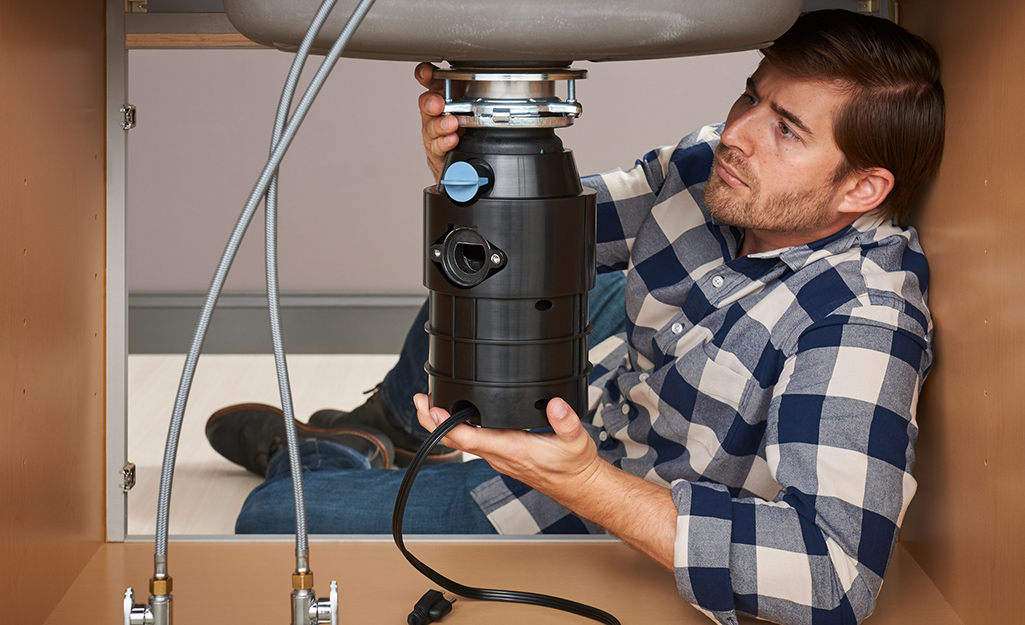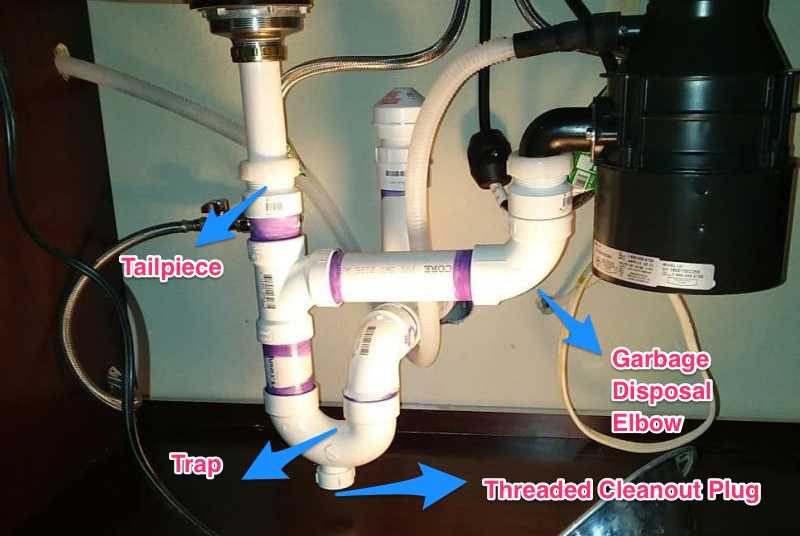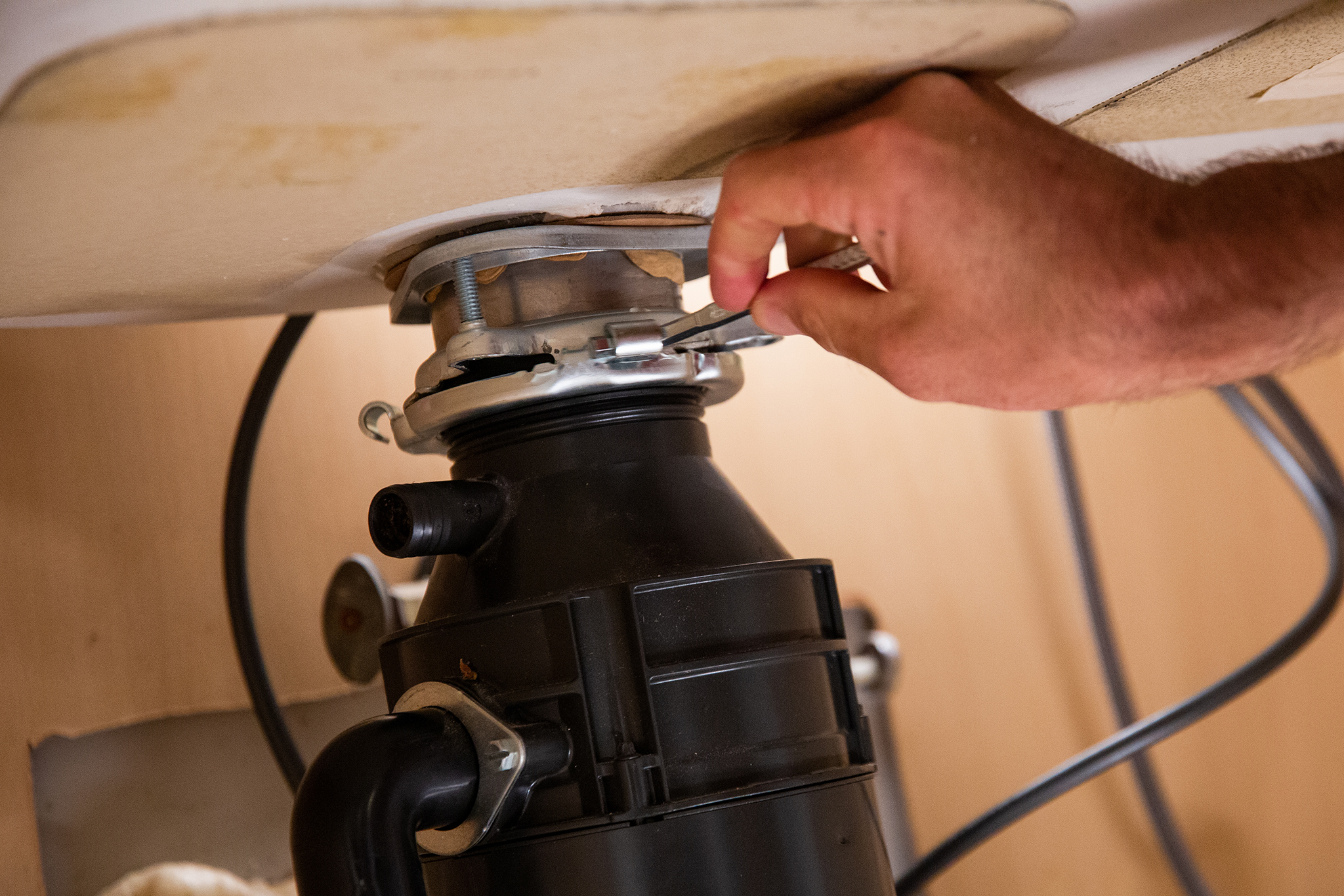

- #HOW TO REMOVE A GARBAGE DISPOSAL DRAIN HOW TO#
- #HOW TO REMOVE A GARBAGE DISPOSAL DRAIN MANUAL#
- #HOW TO REMOVE A GARBAGE DISPOSAL DRAIN FULL#
- #HOW TO REMOVE A GARBAGE DISPOSAL DRAIN PRO#
- #HOW TO REMOVE A GARBAGE DISPOSAL DRAIN PROFESSIONAL#
There are lots of reasons why this happens. Water collecting in the bottom of a dishwasher is a common issue. Soak up any remaining water from the floor of the dishwasher with towels or a sponge. To expedite draining the water, use a wet and dry vacuum if you have access to one. Scoop the water from the bottom of the dishwasher with a plastic cup, transferring the water to a bucket. Pull the bottom dish rack from the appliance to provide yourself more room to remove the standing water. Open the dishwasher and remove the dishes. Make sure you place the towels next to the baseboards to avoid water running beneath the cabinets. Unplug it from the wall outlet or turn off its circuit breaker.īob Vila recommends protecting your floor by laying towels around the front of the dishwasher prior to opening the dishwasher door. Some dishwashers plug into a wall outlet beneath the kitchen sink while others connect directly to a dedicated circuit breaker. Some of the items that can cause the dishwasher to stop draining include a clogged drain line, a defective pump, a broken drain valve or solenoid, a damaged belt, a broken motor or a broken timer.īefore draining, remove all dishes and silverware from inside the machine, as well as the bottom dishwasher rack, recommends American Home Shield.ĭisconnect the dishwasher from the power source. Looking for an affordable home warranty plan ? Here’s where to start:Ī small amount of water left in the bottom of your dishwasher is normal, but when the amount of water appears excessive, covering the heating element and possibly touching the bottom spray arm, you need to drain the dishwasher manually to access the parts of the appliance that can cause this. T aking some preventative steps to keep your dishwasher running smoothly can also help you avoid drainage issues in the future. When the water becomes too shallow to scoop, soak up the remaining moisture with cloth or paper towels.Īlways make sure that you’re using the right type of dish detergent per manufacturer’s directions, to avoid clogging the drain.

With a measuring cup or a large ladle, scoop the water from the bottom into a bowl or the sink. Line the floor under the dishwasher with towels or newspaper.
#HOW TO REMOVE A GARBAGE DISPOSAL DRAIN HOW TO#
If you need to clear standing water at the bottom of a dishwasher, here’s how to drain it :
#HOW TO REMOVE A GARBAGE DISPOSAL DRAIN PROFESSIONAL#
If this occurs, it may b e time to call a professional for help. If it doesn’t make the usual operating sounds, particularly if it’s making a humming or clicking noise, the drain pump and motor may need replacing. Listen to your dishwasher while it’s running a cycle. Listen to Your Machine While I t’s Running That may be enough to help loosen any clogs or debris that are preventing the dishwasher from draining properly. If the water is draining or starting to drain at that time, rinse with hot water and then run the dishwasher’s rinse cycle. Mix together about one cup each of baking soda and vinegar and pour the mixture into the standing water at the bottom of the dishwasher. Push on the valve to make sure it moves freely and isn’t stuck. Inspect the drain valve found on the valve bracket, often located at the bottom of the machine. Blow through the hose or poke a wire hanger through to check for clogs. Straighten any kinks that you may see, which could be causing the problem. Inspect the Drain HoseĬheck the drain hose connecting to the sink and garbage disposal. For many dishwashers, the filter can be found on the inside bottom of the appliance.

#HOW TO REMOVE A GARBAGE DISPOSAL DRAIN MANUAL#
Check your owner’s manual to see where the filter is located on your dishwasher, and for instructions on how and when to clean it. Many homeowners don’t realize that dishwasher filters need to be cleaned regularly. You may have a clogged dishwasher filter that’s preventing water from draining. Read the manufacturers’ instructions or owner’s manual for tips and directions on how to load dishes for best results. Make sure you’re loading the dishwasher correctly. Check for BlockagesĬheck the bottom of the dishwasher to make sure that an item or pieces of food haven’t fallen from the rack to block the water flow. Simply running the disposal for about 30 seconds may fix the issue.
#HOW TO REMOVE A GARBAGE DISPOSAL DRAIN FULL#
Run the DisposalĪ full garbage disposal or an air gap in a connecting hose can prevent water from properly draining out of the dishwasher. If draining your dishwasher is an issue, here are eight simple techniques to try at home. What to Do When Your Dishwasher Won’t Drain
#HOW TO REMOVE A GARBAGE DISPOSAL DRAIN PRO#
īroken Dishwasher? Need a Pro Now? Book a qualified, local home repair Pro with American Home Shield ProConnect in just a few clicks. In fact, you may be able to correct the problem yourself without professional help. While it can be scary to open the dishwasher door and see standing water at the bottom, it isn’t always a plumbing emergency. One of the most common problems reported to plumbers by homeowners is when a dishwasher won’t drain.


 0 kommentar(er)
0 kommentar(er)
